Doris Day, the woman who made iconic marks in the worlds of music, radio, movies and television — and one of the most famous animal advocates in history — has died. She was 97.
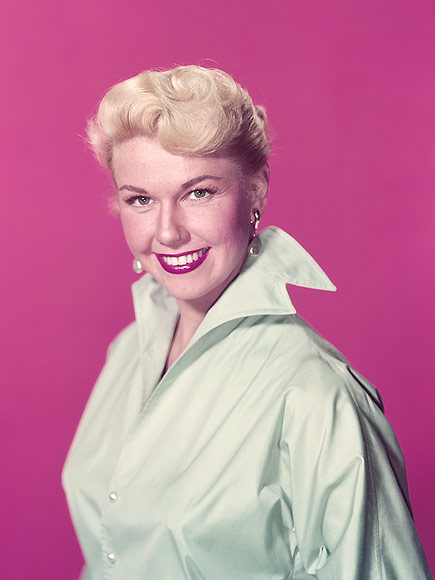
The Doris Day Animal Foundation announced her passing early Monday in a press release, noting, "Day had been in excellent physical health for her age, until recently contracting a serious case of pneumonia, resulting in her death. She was surrounded by a few close friends as she passed."
DORIS DAY'S 12 BEST PIECES OF WORK — HERE
Day, born Doris Kappelhoff in Cincinnati, Ohio, on April 3, 1922, was first attracted to dancing, and was a member of a duo in the 1930s. That hobby ended abruptly in 1937 with a serious leg injury, but it was a fortuitous setback — she wound up singing to the radio and learning she could carry a tune, and carry it far.
Inspired by Ella Fitzgerald (1917-1996) and encouraged by singing lessons with a teacher who immediately recognized her power, Day landed paid gigs on WLW and at a restaurant, coming to the attention of orchestra leader Barney Rappaport (1900-1970). He encouraged her name change, and working with him led to collaborations with others, including Les Brown (1912-2001).
It was with Brown when Day tasted national success, thanks to her creamy rendition of his tune "Sentimental Journey," a smash in 1945. She followed it with hits like "My Dreams Are Getting Better All the Time" (1945) and "I Got the Sun in the Mornin'" (1946), becoming a singing sensation to beat the band.

Having appeared in a trio of Soundies — early versions of music videos — Day was cast in her first acting role, 1948's Romance on the High Seas, which brought with it the #2 hit "It's Magic" (1948). The same year, she hit the top of the charts for the first time, with "Love Somebody."
Considered a singer who could act passably, Day appeared in a number of pleasing films, breaking through to another level with the box-office bonanza I'll See You in My Dreams (1951) and with the memorable hit (and her favorite of her films) Calamity Jane (1953), the latter of which contained the #1 Oscar-nomated hit "Secret Love."
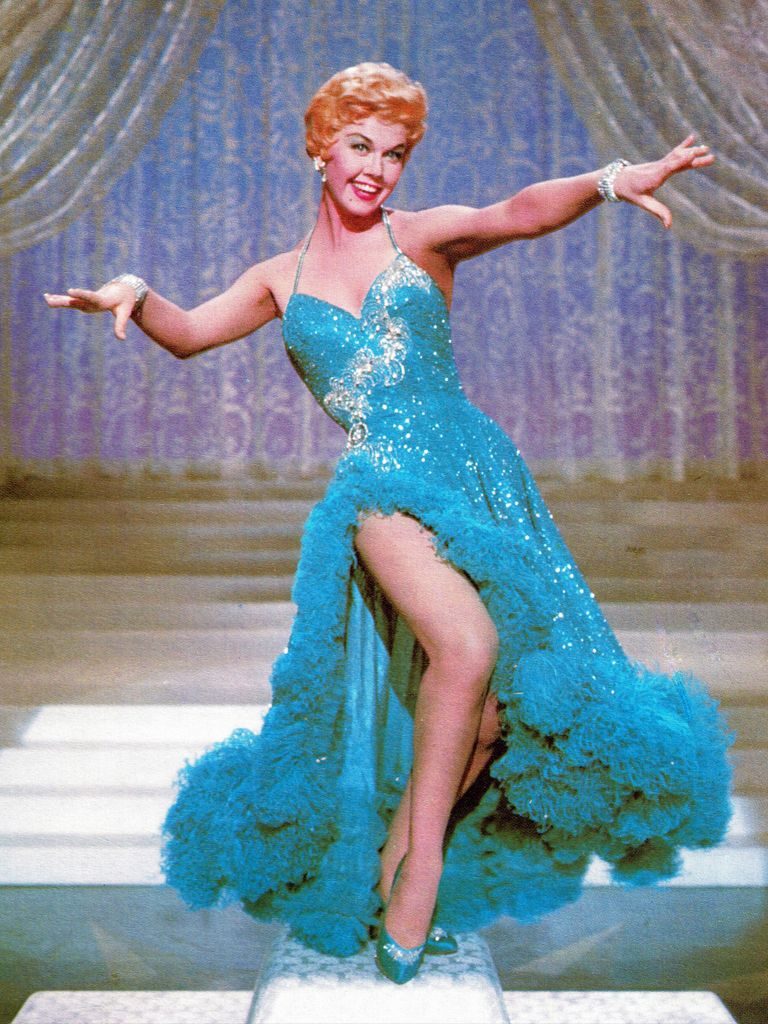
Still one of America's musical sweethearts, Day challenged herself with the 1955 biopic Love Me or Leave Me, the life story of singer Ruth Etting (1897-1978). It was a career high, but Oscar buzz failed to materialize for the woman whose mass popularity seemed to chip away at being taken seriously.
She had another movie/theme hit combo in Alfred Hitchcock's (1899-1980) The Man Who Knew Too Much (1955) and "Que Sera, Sera (Whatever Will Be, Will Be)," a tune that would become arguably her ultimate signature. It was another Day-sung song nominated for an Oscar — and this time, it won.
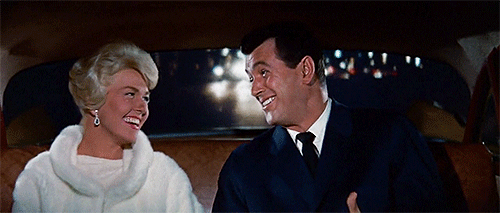
Day hit her stride in film in the late '50s, rarely returning to dramatic roles, which had brought some texture to her work. Instead, she became a human archetype of American sweetness, even of improbable virginity, in wholesome-with-a-wink favorites like Pajama Game (1957), Teacher's Pet (1958) and a remarkably successful series of romantic comedies with Rock Hudson (1925-1985): Pillow Talk (1959), her first and only Oscar nomination for Best Actress; Lover Come Back (1961); and Send Me No Flowers (1964).
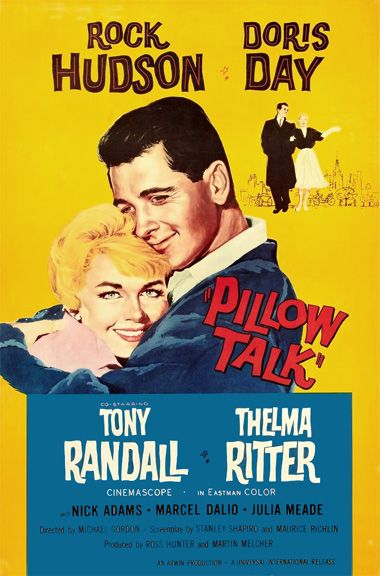
Minting money in such fare, she scored again with the hits Please Don't Eat the Daisies (1960) with David Niven (1910-1983), which spawned a TV series; That Touch of Mink (1962) with Cary Grant (1904-1986); The Thrill of It All (1963) with James Garner (1928-2014); and Do Not Disturb (1965) with Rod Taylor (1930-2015).
For a gal consistently among the country's Top 10 draws at the box office, Day's decline — precipitated by her aging girl-next-door image in the era of the more substantive '60s — was swift. Her final starring role was in With Six You Get Eggroll (1968), a mere three years after she was able to open films with ease.
That was the year Day found out her husband Martin Melcher (1915-1968), who had just died, had spent most of her fortune. The most famous woman in the world was deeply in debt right when she most needed that security on which to fall back. A high-profile court case restored some of her money, but not for a decade.

In the meantime, Day begrudgingly honored a commitment Melcher had made for her to star on the weekly TV series The Doris Day Show (1968-1973). Hard up for cash and having been signed, she didn't have the luxury to say no. Her household-name status kept the light-as-air confection afloat for five seasons, even if the cast and set-up changed willy-nilly.
Fed up, the workhorse appeared in the TV variety specials The Doris Mary Anne Kappelhoff Special (1971) and Doris Day Today (1975), but other appearances became remarkably scarce. She hosted Doris Day's Best Friends on CBN (1985-1986), a chance to indulge her renowned interest in animals, and it was on this show that an appearance by her old co-star Rock Hudson visually confirmed what had been rumored — he was suffering from AIDS.
Day granted sparse TV and phone interviews from the '70s on, often expressing surprise at the moniker that followed her — "The World's Oldest Virgin." She did promote her Doris Day: Her Own Story (1975), a revealing memoir written with A.E. Hotchner, in which she spoke candidly of her life.
Her distaste for gala events led her to turn down an American Film Tribute and is rumored to be behind the reason she was never given an honorary Oscar — the Academy reportedly insisted she show up to collect it. She did receive the Presidential Medal of Freedom in 2004, but again, accepted it from afar.
Day's final public appearance (aside from waving outside her balcony) came in 2014 at a birthday tribute held to raise money or the Doris Day Animal Foundation. She surprised guests by emerging and posing for photos with many attendees.
Each year for the past several years, Day has released an official birthday portrait along with a few words about her life. In 2017, she announced she had always been wrong about her age, and was in fact two years older — probably a little white lie and certainly not a rarity among Golden Age actresses.
In 2019, Day's birthday splash was a talk with THR, in which she said of her (final) birthday plans, "I have dear pals in from out of town, and we’ve been celebrating all week, reminiscing over lovely, quiet dinners at home." She assessed her impact on film by saying, "I enjoyed working and always tried to do the best job I could with every role. I’m thrilled to know that people are still watching my films and are uplifted by them."
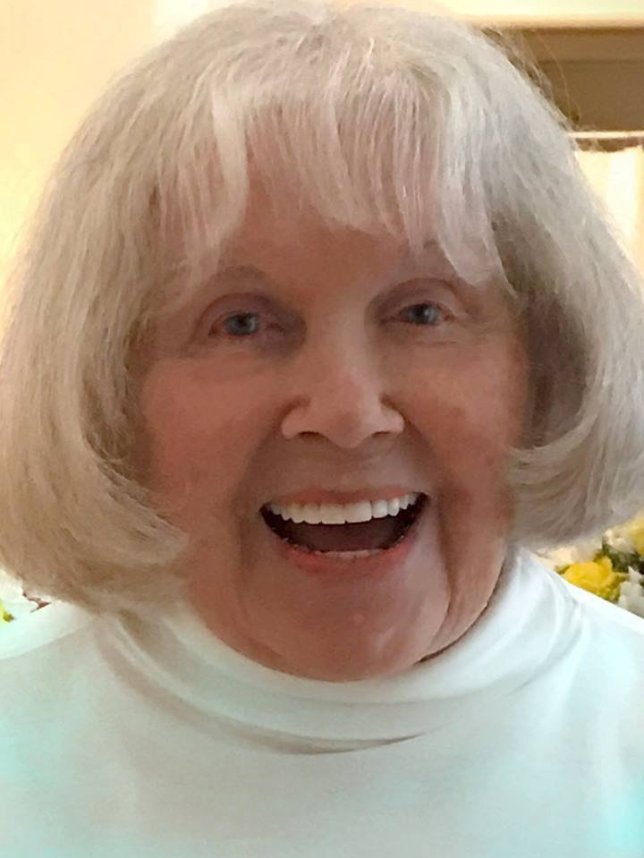
Day was married, unhappily, four times, the last marriage ending in divorce in 1981. She had one son, producer Terry Melcher (1942-2003), who was infamous for a brief association with Charles Manson (1934-2017) and noted for his work on counterculture music trends in the '60s.





